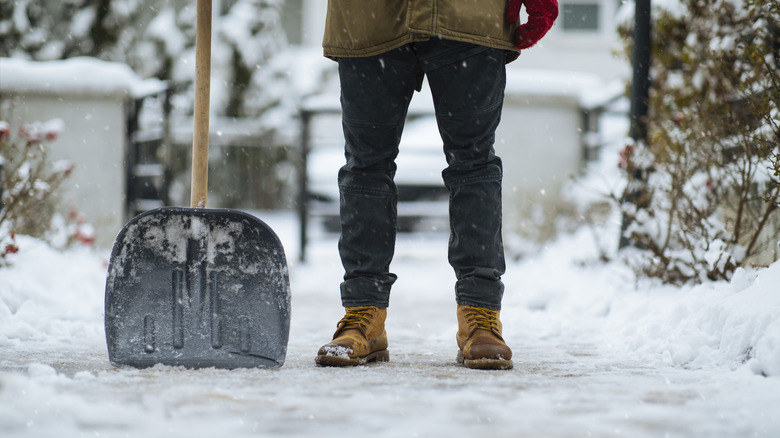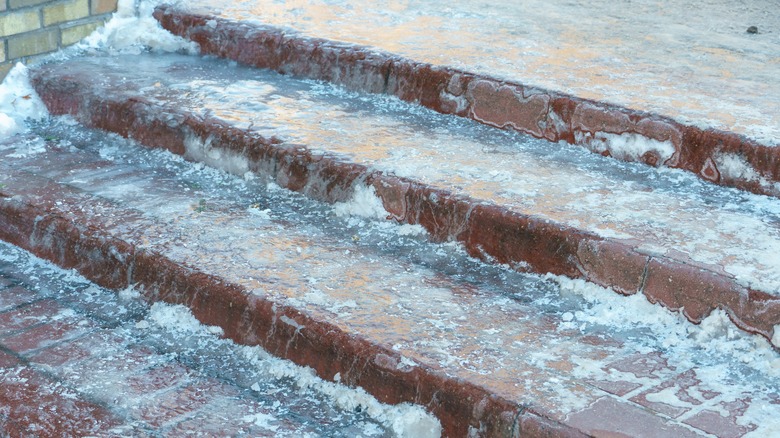Safely Melt The Ice On Your Driveway With This Household Essential
Winter is never a good time to realize you've run out of driveway salt. The good news is, however, that if this ever happens to you, there are a few household items that can help you melt that ice on your driveway until you are able to buy some more salt. While many people have already heard that used coffee grounds can melt driveway ice, the only problem with this method is that you need a lot of coffee grounds for it to be successful. In this case, it is best to turn your attention to another household staple — vinegar.
Vinegar is one of those multifunctional ingredients that not only makes certain foods taste better, but can also be helpful for its many uses in the yard and garden as well as being a good insect repellent while camping. What you also may not know about white vinegar is that its acidity can actually lower the freezing point of water, thereby making it harder for ice to form and causing existing ice to melt. On top of this, vinegar is better for the environment than road salt, which often gets into waterways and harms wildlife.
That said, it is also important to know that when it comes to melting winter ice, vinegar doesn't work as well as road salt and can even start to erode your driveway overtime; therefore, it should only be used once in a while. However, if you do find yourself in a situation with an icy driveway and no salt, here's how to use that bottle of white vinegar to your advantage.
How to melt ice with white vinegar
Although vinegar is able to successfully lower the melting point of water, if you just apply pure vinegar to already frozen ice, you probably won't get results. Instead, the vinegar will need to be mixed with other ingredients — like water — to help it work. One good option for melting a thin layer of ice is to mix together equal amounts of vinegar and water and then spread it evenly across your driveway. For thicker ice, you may want to consider using two parts water to three parts vinegar. It may take a few applications of this mixture to successfully melt the ice and some websites recommend mixing the vinegar with hot water to help speed up the process. After the ice has started melting, you can break it up with a shovel and remove it from your pavement.
Although vinegar can help melt ice in a pinch, this household condiment is actually most effective when it is applied to an area before the ice. This works especially well on car windshields, where a layer of vinegar will help melt the ice before it ever forms and prevent buildup on your windows. So, if you are expecting an ice storm and don't have road salt, you may be able to help prevent ice buildup simply by applying vinegar to troublesome areas before the storm hits.

